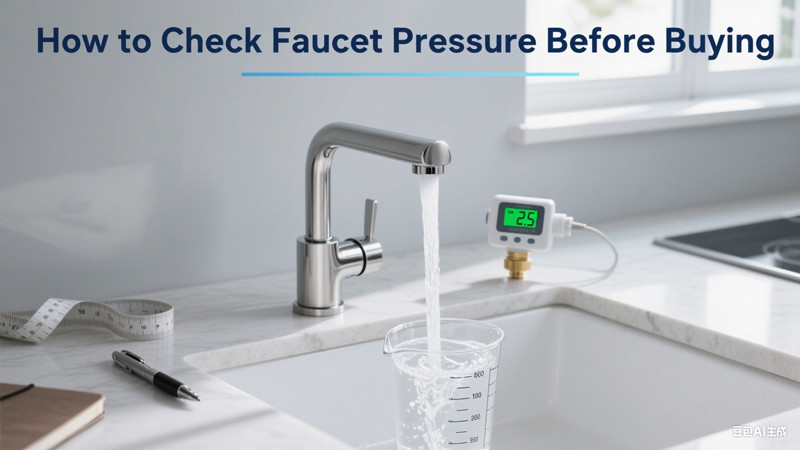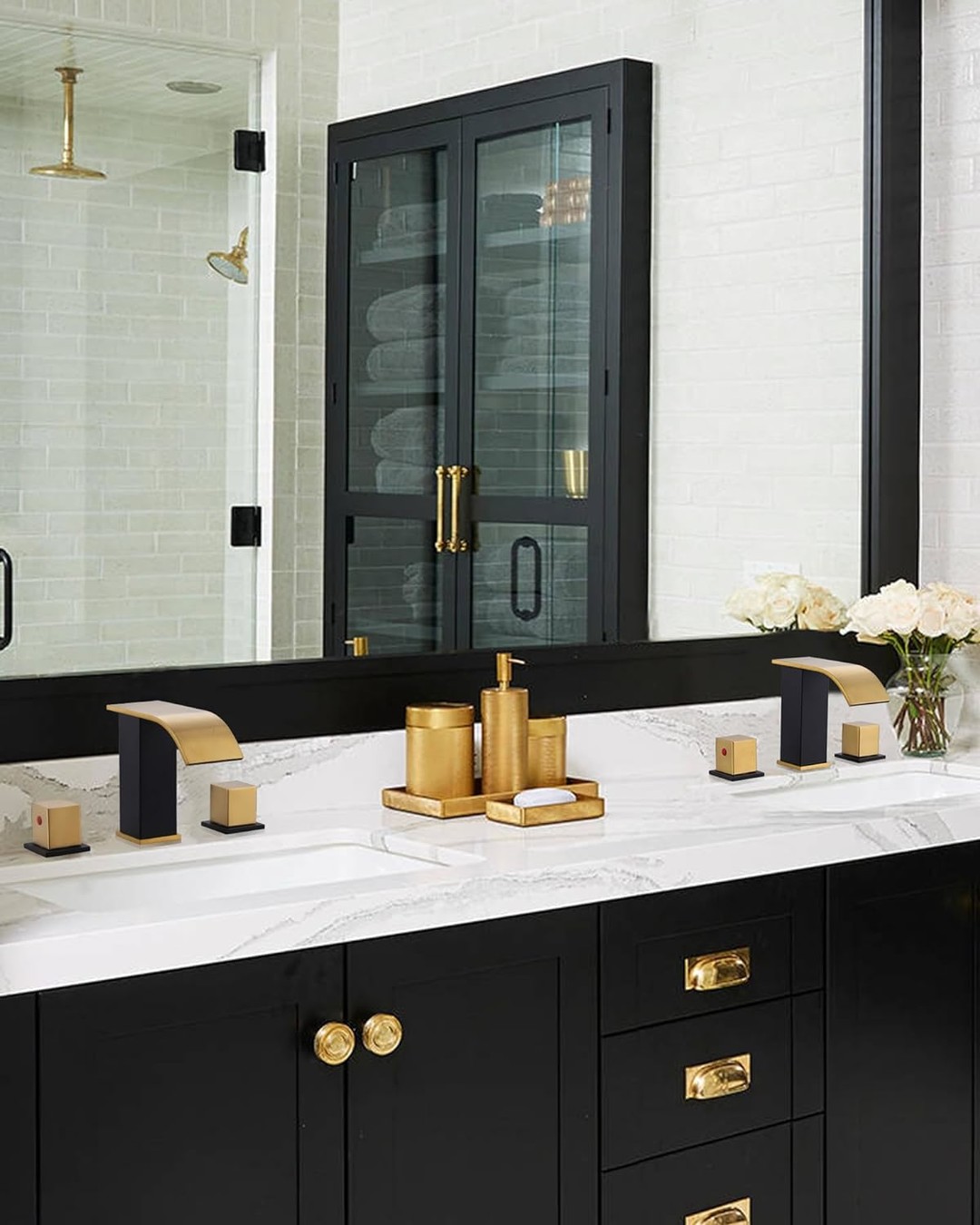How to Check Faucet Pressure Before Buying
View Count:109 CategoryBlog
When shopping for a new faucet, most people focus on design, finish, and brand reputation. But there’s another critical factor that often gets overlooked: water pressure compatibility. A faucet that looks stunning but delivers a weak trickle of water can be a daily frustration. Checking faucet pressure compatibility before you buy ensures you’ll enjoy strong, consistent flow without splashing, sputtering, or slow fills.
In this guide, we’ll walk you through everything you need to know to check faucet pressure before making a purchase, including how to measure your home’s water pressure, what flow rates to look for, and how pressure affects faucet performance.
Why Faucet Pressure Matters
Water pressure directly affects how your faucet performs. Too little pressure, and your faucet may barely trickle. Too much pressure, and you could experience leaks or damage to internal components.
Most residential homes have water pressure between 40 and 80 psi (pounds per square inch). Faucets are designed to operate efficiently within a certain pressure range. If your home’s water pressure falls outside that range, you may not get the performance you’re expecting.
Here are some problems that occur when water pressure doesn’t match the faucet:
- Low Pressure: Weak flow, slow-fill sinks, poor sprayer performance
- High Pressure: Spraying, splashing, potential faucet or pipe damage
Knowing your home’s pressure lets you choose a faucet with the right specs.
Step 1: Measure Your Home’s Water Pressure
Before buying a faucet, it’s wise to check your home’s water pressure. You don’t need a plumber to do this — all you need is a simple water pressure gauge (available at most hardware stores for under $15).
How to Measure:
- Make sure all faucets and appliances (dishwasher, washing machine, etc.) are turned off.
- Screw the pressure gauge onto an outdoor hose bib or faucet (one closest to your water meter is best).
- Turn the water on fully and read the pressure on the gauge.
Ideal Range: 50 to 70 psi
- Below 40 psi: Considered low pressure
- Above 80 psi: May require a pressure regulator
If your water pressure is consistently low, you may need a faucet designed to perform well in low-pressure systems.
Step 2: Understand Faucet Flow Rates
Faucets are rated by their flow rate, measured in gallons per minute (GPM). Most residential faucets are restricted by federal regulations to conserve water:
- Bathroom Faucets: 1.2 GPM (typical maximum)
- Kitchen Faucets: 1.8 GPM (typical maximum)
Some faucets are labeled as low-flow, meaning they use less water than the maximum allowed. Others are labeled high-efficiency or WaterSense certified, which ensures good performance while using less water.
How Flow Rate Affects Pressure:
- A low GPM faucet will naturally feel weaker if you already have low water pressure.
- If your home has low water pressure, avoid ultra-low-flow faucets.
- Conversely, homes with high pressure can benefit from low-GPM faucets without sacrificing performance.
Step 3: Check Faucet Specifications Before Buying
Once you know your water pressure and desired flow rate, check the technical specifications on the faucet packaging or product listing.
Look for details like:
- Operating Pressure Range: E.g., “30 to 80 psi”
- Recommended Pressure: Some faucets list a minimum for optimal performance
- Flow Rate: Confirm whether it’s 1.2 GPM, 1.5 GPM, 1.8 GPM, etc.
- Aerator Type: Some aerators increase perceived pressure even with lower GPM
Many online retailers and manufacturer websites include this information in the product details or user manual. If it’s missing, don’t hesitate to contact customer support.
Step 4: Consider Faucet Type and Features
Certain types of faucets are more sensitive to water pressure:
1. Touchless Faucets
- These often require a minimum pressure (usually 40 psi or more) to operate the sensor and maintain flow.
- If your pressure is on the low end, make sure the sensor faucet is rated for it.
2. Pull-Down Sprayers
- These need consistent pressure for the spray and stream functions to work properly.
3. Commercial-Style Faucets
- These are often designed for high pressure. Check specs to avoid underperformance in low-pressure homes.
4. Wall-Mounted Faucets
- Depending on the pipe location, you might experience pressure loss.
Matching faucet type with your pressure profile ensures optimal performance.
Step 5: Ask the Right Questions Before Buying
If you’re buying in-store or online, don’t hesitate to ask these questions:
- What is the faucet’s operating pressure range?
- Does it work with low-pressure plumbing systems?
- What is the faucet’s flow rate at 60 psi?
- Is the faucet WaterSense certified?
- Does the faucet come with adjustable aerators?
Being informed protects your investment and prevents buyer’s remorse.
Bonus: Tips to Improve Pressure Without Changing Faucets
If you already bought a faucet and the pressure isn’t ideal, try these fixes:
- Clean or replace the aerator: Mineral buildup can reduce flow.
- Check shut-off valves: Make sure they are fully open.
- Install a flow booster or pump: Especially useful in low-pressure homes.
- Flush the lines: Debris may be blocking water flow.
Final Thoughts
Faucets are more than just stylish accents — they’re functional hardware that must perform well every day. Understanding your home’s water pressure and matching it with the right faucet ensures you get the best possible experience.
Before buying your next faucet, take five minutes to check your water pressure and read product specs. It could mean the difference between a disappointing drip and a powerful, satisfying flow.
So next time you’re shopping for a faucet, don’t just focus on finish and style. Make pressure compatibility a top priority. Your future self (and your dishes) will thank you.
 Faucet Online
Faucet Online



您好!Sign In